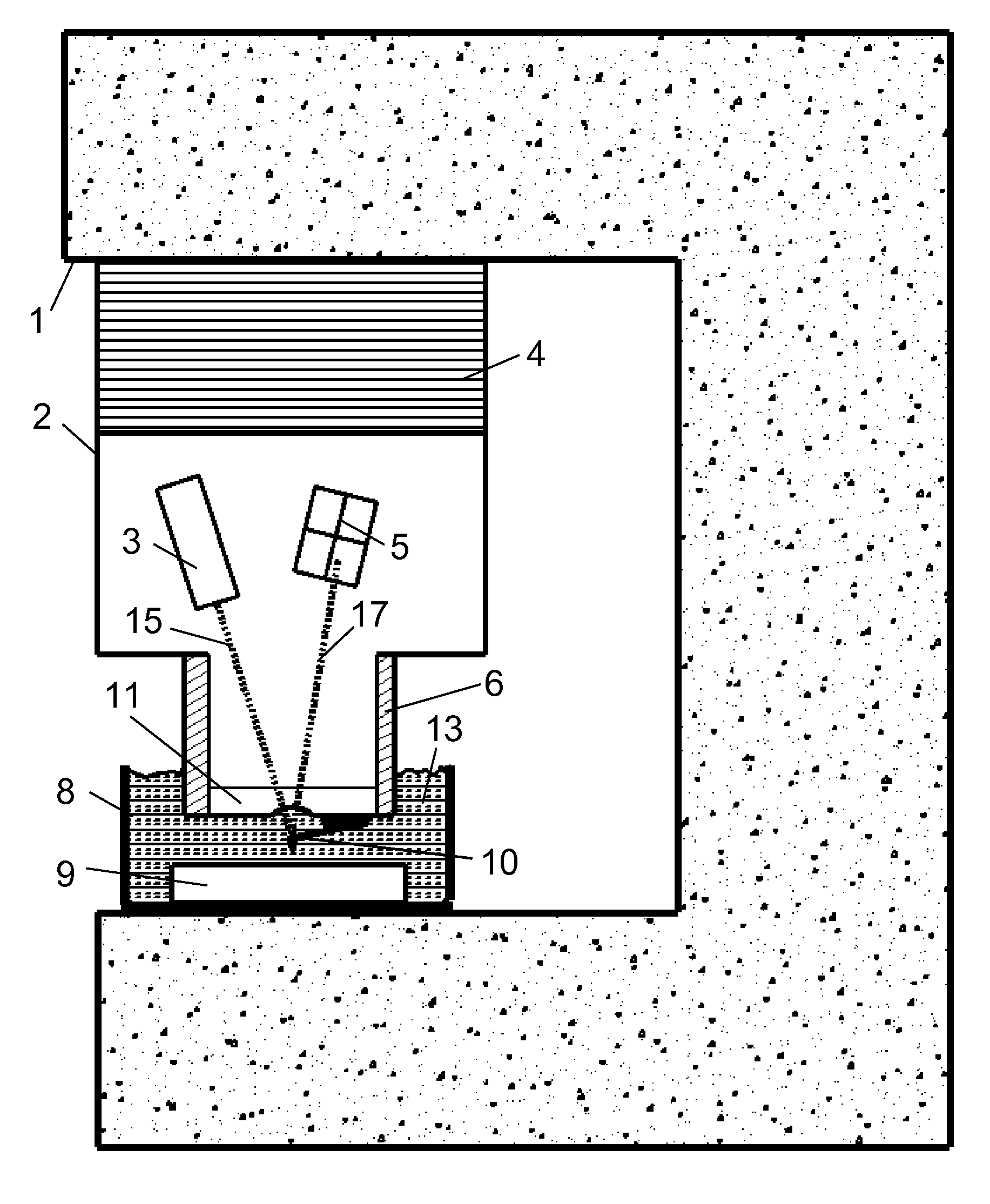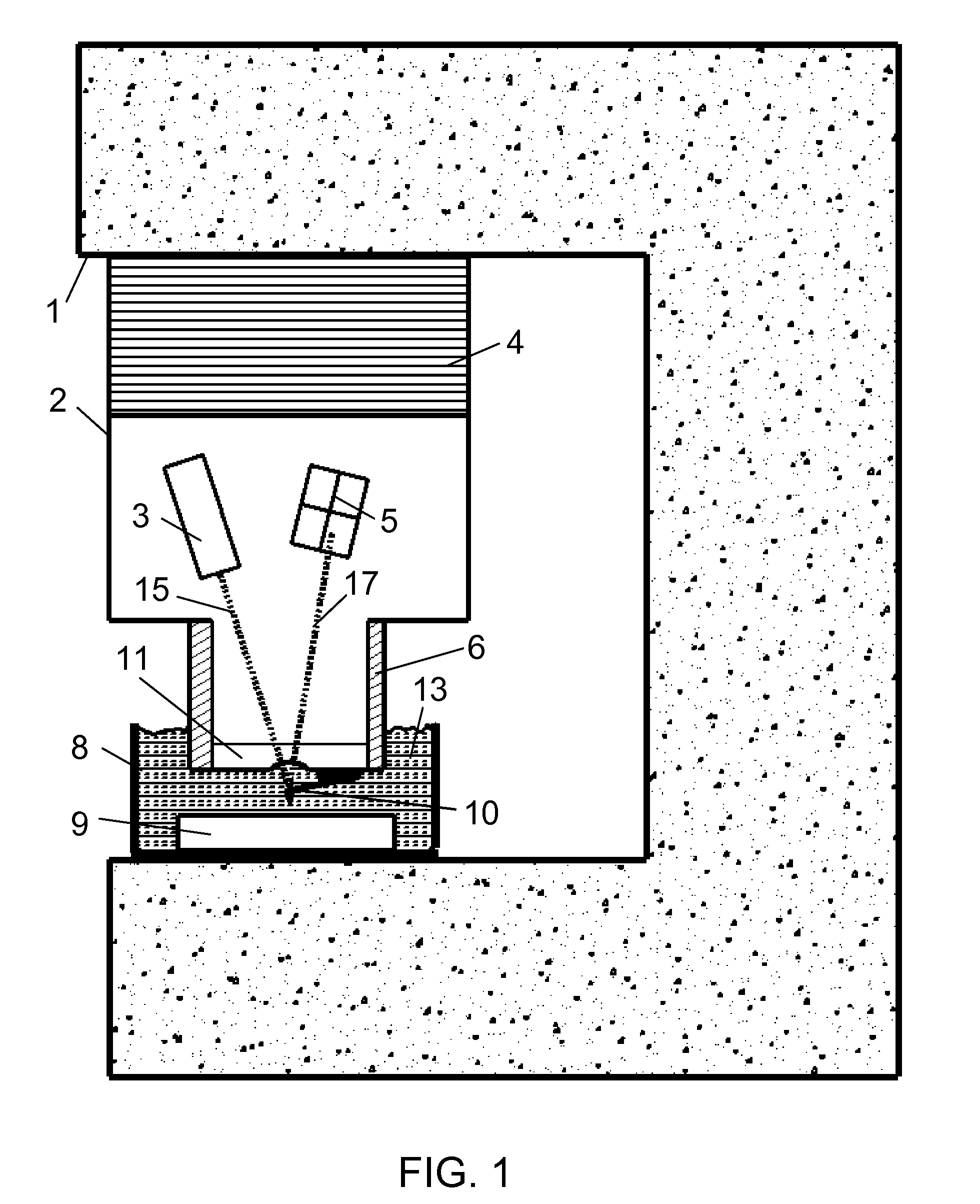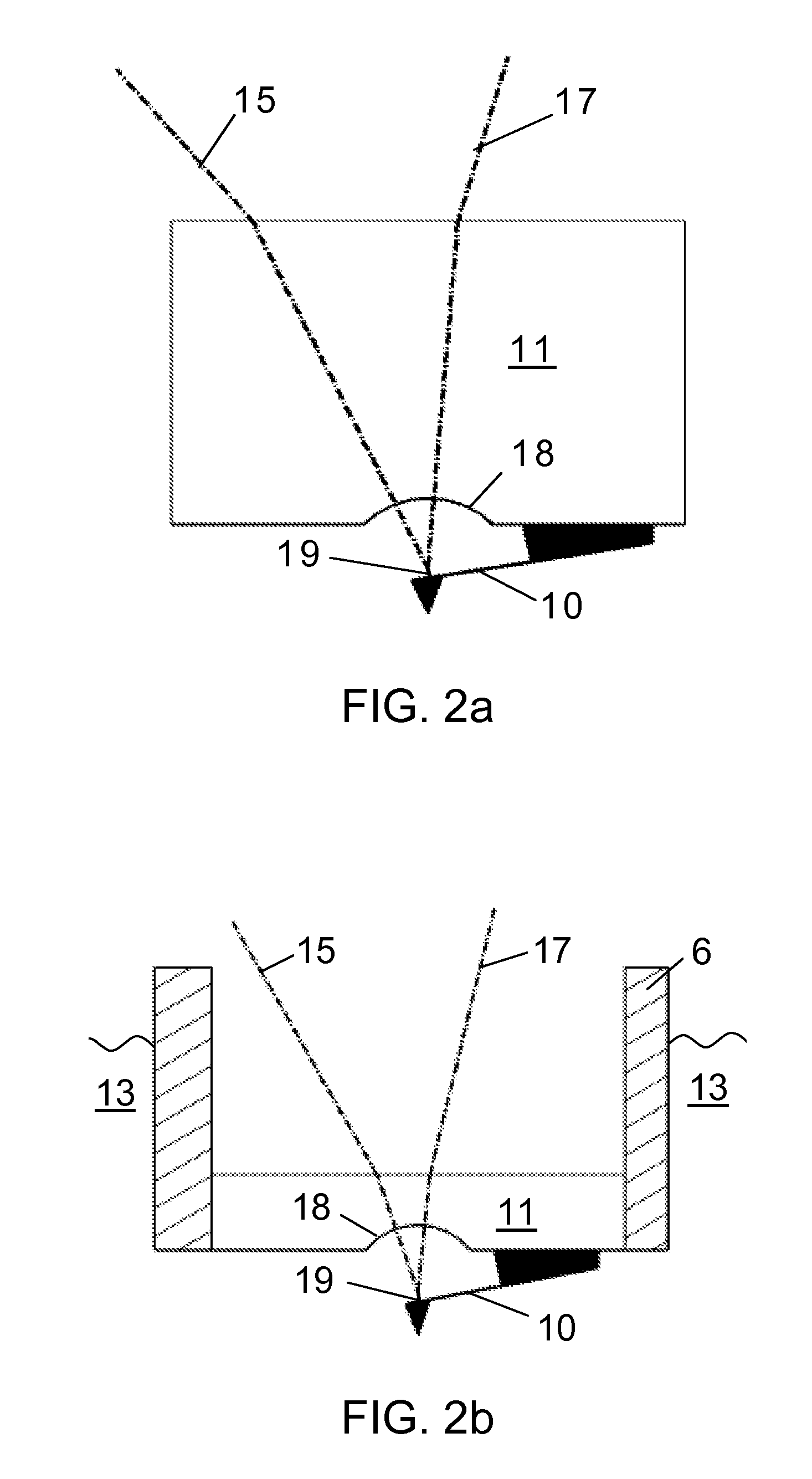Optical detection system for micromechanical cantilevers, especially in scanning probe microscopes
a detection system and micromechanical technology, applied in the direction of beam/ray focussing/reflecting arrangement, instruments, electric discharge lamps, etc., can solve the problems of hardly adaptable cantilever-based spm solution to any of the typical cantilever-based spm, and achieve the effect of facilitating venting of the cavity
- Summary
- Abstract
- Description
- Claims
- Application Information
AI Technical Summary
Benefits of technology
Problems solved by technology
Method used
Image
Examples
first embodiment
[0035]FIG. 3 is a detail view of the optical element;
second embodiment
[0036]FIG. 4 is a detail view of the optical element; and
[0037]FIG. 5 is a further embodiment with separate optical elements.
[0038]FIG. 1 shows a typical AFM in which the present invention may be used whenever samples in fluids are to be investigated or measured.
[0039]The stationary body 1 of the AFM is shown schematically only; only the parts important for the present invention are depicted in some detail. Housing 2 comprises the optical arrangement consisting of a laser 3 and a receiver or sensor diode 5, the latter being e.g. a four-quadrant diode. An x-y-z positioning device 4 can move housing 2 in three dimensions as known in the AFM art. A tube-like extension 6 of housing 2 reaches into fluid 13 which fills probe chamber 8. The bottom end of extension 6 is closed by a transparent optical element 11 which provides the separating element between the fluid 13 and the inside of housing 2. The latter is usually air-filled.
[0040]Sample 9 which is to be investigated is located at the...
PUM
 Login to View More
Login to View More Abstract
Description
Claims
Application Information
 Login to View More
Login to View More - R&D
- Intellectual Property
- Life Sciences
- Materials
- Tech Scout
- Unparalleled Data Quality
- Higher Quality Content
- 60% Fewer Hallucinations
Browse by: Latest US Patents, China's latest patents, Technical Efficacy Thesaurus, Application Domain, Technology Topic, Popular Technical Reports.
© 2025 PatSnap. All rights reserved.Legal|Privacy policy|Modern Slavery Act Transparency Statement|Sitemap|About US| Contact US: help@patsnap.com



